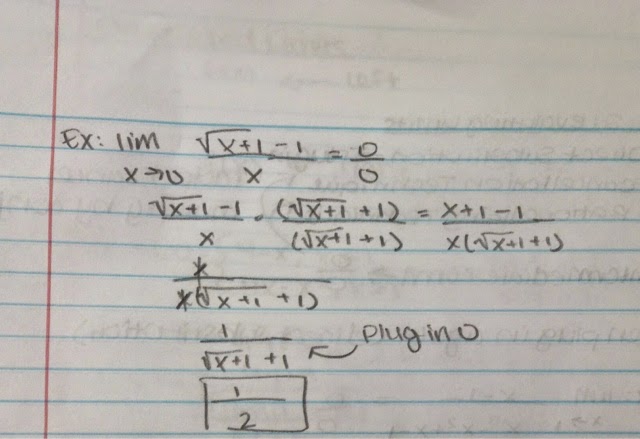There are three main ways to evaluate limits.
1) direct substitution (plug-in)
2) cancellation technique (factor and cancel)
3) rationalizing technique (multiply by the conjugate-only used with problems with radicals)
You should use the direct substitution first. If using direct substitution gives you 0/0, then it is in intermediate form. If it is in intermediate form, then you have to either use the cancellation technique or the rationalizing technique to get a new equation. Then plug the number from the original equation into the new equation.
Example of the cancellation technique
Example of the rationalizing technique
One-sided limits
Sometimes there are problems like this:
In these types of problems, you have to plug it in to both eqautions. If it the result is the same for each equation then there is a limit. In this case, the limit is 3. If the result for each eqaution is different, then it is a one sided equation and you can solve for each side separately.
Math joke of the day:


















